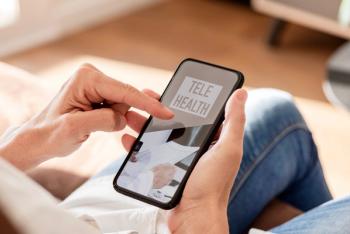
Technology Is Making Mobile EHRs a Reality
The advent of the tablet and the smartphone as medical "tools" has created increasing opportunities for ''on-the-go" data access for today's healthcare providers. Hospitals have increasingly moved to standardization of mobile devices while implementing mobile device management (MDM) policies to provide infrastructure for physicians and other healthcare providers to both communicate and access patient data via the EHR. A 2016 whitepaper from SpyGlass Consulting Group reported that 63 percent of organizations have deployed or plan to deploy mobile communications platforms over the next 12 months to 18 months. As hospitals have become increasingly capable of utilizing mobile technology to provide on-the go access, EHR companies have started to ramp up development of device access to existing and new EHR systems, giving rise to the concept of the "Mobile EHR."
Interest in mobile EHRs has been confirmed in surveys, such as this year's Physicians Practice Technology Report, which found that 78 percent of physicians were using mobile-accessible EHRs, which is the highest rate ever. The 2016 tech survey also identified that more than 85 percent of physicians and practices were using mobile devices in in the performance of their jobs.
Up until recently, three issues prevented mobile EHRs and other mHealth technologies from entering into wide-scale adoption:
1. Devices weren't capable in terms of screen size or battery life.
With the advent of larger screen devices (5.5" smartphones and 9.7"-12.1" tablets) that have longer battery life (up to 10 hours on devices such as Apple iPads), EHRs have become more usable in daily practice.
2. EHRs had not developed interfaces that were well-suited to mobile technology.
Only in the last few years have EHR developers placed priority on developing interfaces that work well with smaller devices. Those that do have found approval from physician users, as evidenced by 2015 physician surveys, from the Black Book research group, which ranked products from drchrono, Cerner, and athenahealth (among others) as high in physician satisfaction.
3. Concerns about security and data protection.
Hospitals that integrate EHRs have started to look at external standards, such as those presented by the National Cybersecurity Center of Excellence (NCCoE) that attempt to create "best practice" guidelines for EHR security. Coupled with the MDM policies of the institution, they can create an environment that is functional, yet secure.
With the growing demand from healthcare providers and patients for mobile solutions that provide point-of-care access to tools which allow for better explanation, communication, and clinical decision making, it is clear that integrated solutions that leverage the capabilities of device providers, EHR developers, and IT departments will pave the way to a future in which the EHR sits alongside the stethoscope in the provider's pocket.
Saroj Misra, DO, FACOFP,is an osteopathic physician based in Warren, Mich. He is also a member of the Physicians Practice Physician Advisory Board. He can be reached via editor@physicianspractice.com
Newsletter
Optimize your practice with the Physicians Practice newsletter, offering management pearls, leadership tips, and business strategies tailored for practice administrators and physicians of any specialty.











